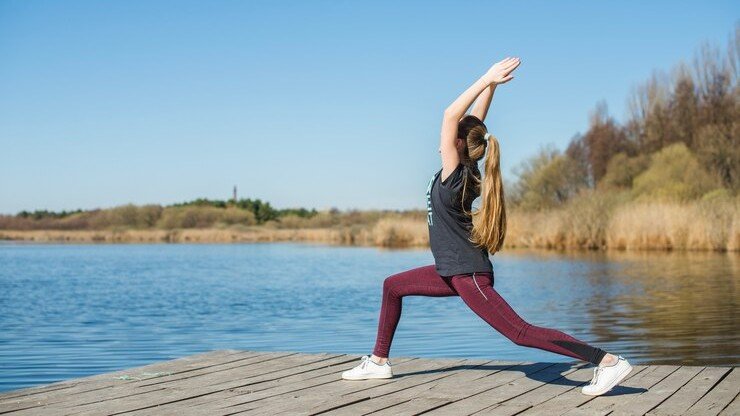Bones provide physical frame to your body. When bones don’t remain bold enough to take the weight of your own being, when bones become brittle and cannot allow you to anchor within your frame and peacefully settle, that’s the time you must know that the bones have eroded, corroded from inside. They become weak.
The biggest question is how? Why?
Search, look out for those questions and you will realize that you haven’t loved them enough, serviced them enough, fed them enough, challenged them enough.
So, from being fed and challenged comes a point about food and fitness. The neglect of food and fitness results in degeneration of bone health. If there is neglect, the understanding is very clear as to ‘why’, and then the answer emerges ‘how’ do we once again reverse?
Of course Yoga can help improve bone strength. It is reversible and yes it may not happen overnight. It will take a while.
Yoga helps to increase muscle and bone strength, which has a positive effect on your balance, posture, and stability. Staying active can help to alleviate pain and reduce your risk of bone fractures
The best yoga poses for bone strength include balance and strengthening moves, and any pose that encourages you to sit or stand tall, as opposed to flexing the spine and bending forward. Balance and strengthening poses help prevent falls. to a great extent.
Yoga is an excellent way to enhance your bone strength. A daily routine of certain yoga asanas can help to strengthen your muscles and bones, which helps lower your risk of injuries and falls.
Yoga is a useful addition to your osteoporosis treatment plan. It can help to ease symptoms, improve bone health, and lower your risk of complications. Yoga may also increase bone density after menopause.
Gentle yoga involving weight-bearing poses can build strength, ease pain, and encourage good posture. It also helps improve flexibility, stability, and agility. These benefits of daily movements will help improve coordination, and reduce your risk of falling too.
Various yoga asanas that help in increasing bone density are as follows,
Treepose vrukshasan for balancing and concentration.
Triangle pose for flexibility in the spine, hips, and legs.
Warrior 2 pose Strengthens legs and improves stamina.
Side angle pose( uthita parsva konasana) for stretching
Revolved triangle pose for flexibility
Locust pose (shalabhasana) for strong back
Bridge pose (setu bandhasana) for strengthening glutes, knees and thighs
Reclining hand to big toe pose 1 & 2 ( supta padangustanasana) twisting while lying down
Ardha MatsyendrasanaIt strengthens the spine, increases flexibility
Other than strengthening bones these asanas also improves digestion, removes toxins, cleanses the body, decreases fatigue, and improves functioning of the heart, liver, lungs, kidney and spleen.
Stress is major cause of degeneration. So Relaxing that is Shavasana Promotes relaxation and reduces stress. As much asanas are important, relaxing is also important. Practising Shvasana can help reduce stress, which is a major pathogenic factor in the ageing. Stress triggers the oxidation process at the lipid membrane level, which aids in the tissue’s oxygen release and results in hypoxia. Savasana or corpse pose also helps to replenish the cells and rejuvenate the body.
These practices not only alleviate physical discomfort but also nurture mental and emotional resilience, fostering a balanced state of being.
(Dr Mickey Mehta is a global leading holistic health guru and life coach; website: www.drmickeymehta.com)




